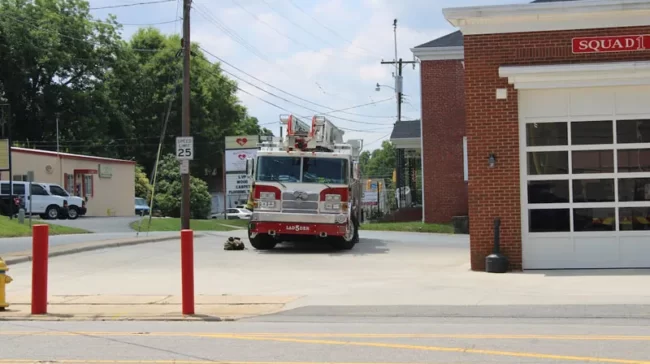
Fire stations play a crucial role in safeguarding communities and responding to emergencies. Efficiently managing the operations at a fire station is vital for ensuring quick and effective responses to fires and other emergencies.
According to the Federal Emergency Management Agency, the US has over 27,000 fire stations. However, not all the stations are in good condition.
NBC Boston recently reported that several fire stations across Massachusetts are in bad shape. From exposed electrical wiring to leaking roofs, these fire stations have all kinds of problems. Similar situations were also observed in a few other states including parts of California.
Such poor conditions can impact the efficiency of these fire stations, which, in turn, will end up affecting thousands of lives. Thus comes the need for efficient operational management at these fire stations.
From streamlining resource allocation to making sure the stations are in good condition, you can employ various strategies to enhance operational efficiency. In this article, we will check out a few ways to efficiently manage the operations at your fire station.
Report Issues with the Station
According to the National Fire Protection Association, over 21,000 US fire stations are over 40 years of age. Your station might be one of them. However, it’ll be difficult to request a complete overhaul of the station itself. That’s because replacing these stations will cost the US government around $70-$100 billion.
Instead, you can report any major issues with the stations to your superiors and ask them to get those fixed immediately. For that, you must first sit with your officers and other firefighters, and ask for their opinions. Then, decide on the major issues and report them accordingly.
Don’t expect changes or improvements immediately. Give them some time to respond to your reports. If they don’t, get back to them again and again. Eventually, you’ll have your problem fixed and then you can move on to the next one.
Establish Clear Objectives and Guidelines
One of the fundamental steps in managing a fire station efficiently is establishing clear objectives and guidelines. These objectives should be specific, measurable, achievable, relevant, and time-bound. Clear goals will allow the entire team to align their efforts toward a common purpose. This will help create a sense of unity and direction.
Managers should also develop comprehensive operational guidelines for firefighting, medical emergencies, equipment usage, and standard operating procedures. These guidelines act as a roadmap, ensuring that all personnel are on the same page when it comes to carrying out their duties. Regularly review and update these guidelines to reflect the latest best practices and industry standards.
Prioritize Safety
Make sure the station has safe fire-fighting equipment. This includes everything from helmets to oxygen tanks. You should also pay attention to the firefighting foam you use. This is something many firemen are concerned about since the firefighter foam cancer lawsuit was brought to public attention.
According to TorHoerman Law, Aqueous Film Forming Foam (AFFF) has been found to cause cancer. This foam is widely used to tackle various types of fires. It’s been established that the foam contains chemicals that can lead to cancer in its users. Thus, when ensuring your station and staff’s safety, make sure you keep this in mind.
Invest in Training and Professional Development
Training is a cornerstone of effective fire station management. Regular training sessions not only keep firefighters updated with the latest techniques and technologies but also build their confidence and competence in handling emergencies. Consider organizing specialized training programs, such as hazardous materials response, technical rescue, or incident command training.
Encourage continuous professional development for all personnel. This could include attending workshops and conferences or pursuing higher education in fire science or related fields. Well-trained firefighters are better equipped to make sound decisions under pressure, reducing response times and improving overall efficiency.
Optimize Resource Allocation
Efficient resource allocation is essential for any organization, and fire stations are no exception. Monitor and analyze past incident data to identify patterns and trends that can inform resource allocation decisions. Allocate resources based on the historical frequency and severity of incidents in different areas within the community.
Invest in modern technology, such as GPS-equipped vehicles and dispatch software, to optimize response routes and reduce travel time. Regularly review the inventory of firefighting equipment and ensure that it is well-maintained and up-to-date.
Regularly Evaluate and Update Emergency Plans
Emergency plans are living documents that need regular evaluation and updates to remain effective. As circumstances change and new risks emerge, it is crucial to review and revise the emergency response plans accordingly. Involve the entire team in the evaluation process to gather valuable feedback from those on the frontline.
Conduct realistic drills and exercises to test the effectiveness of emergency plans in real-life scenarios. Identify areas that need improvement and use these drills as opportunities for learning and growth. The more prepared the team is, the better they can handle emergencies, minimizing response time and reducing potential damage.
Conclusion
If you’re managing a fire station, you have a lot of responsibilities on your shoulders. However, unless you can ensure operational efficiency, those responsibilities will turn into burdens. Therefore, with whatever authority you hold, make sure you enhance the efficiency at your station. If needed, don’t hesitate to turn to this list and then get back at it again.
